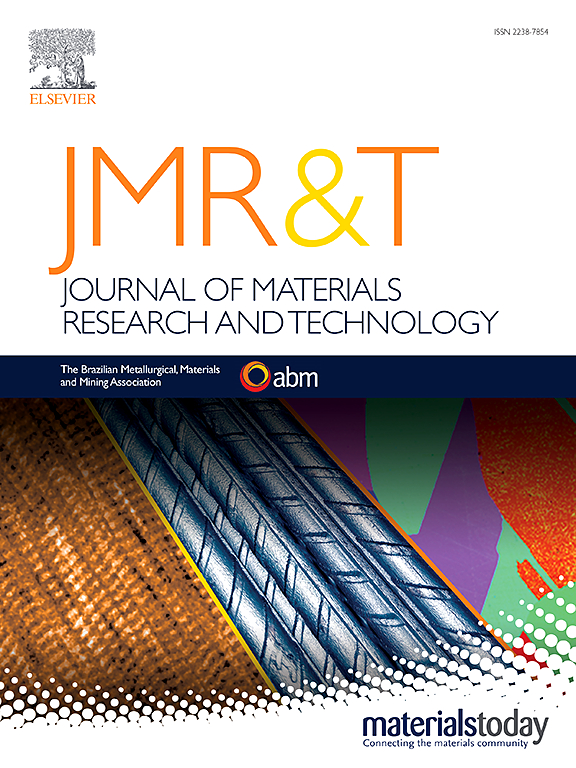楔横轧件材料断裂数值模拟的新方法
IF 6.6
2区 材料科学
Q1 MATERIALS SCIENCE, MULTIDISCIPLINARY
Journal of Materials Research and Technology-Jmr&t
Pub Date : 2025-06-07
DOI:10.1016/j.jmrt.2025.06.047
引用次数: 0
摘要
本文研究了楔横轧过程中工件轴向区材料断裂的建模问题。提出了一种新的方法,通过精确确定材料损伤的临界值,可以保证模型精度的提高。结果表明,在CWR工艺中,临界损伤值与成形温度T和施加的还原比δ有很大关系。利用实验结果建立了不同T值(900 ~ 1200℃)和δ值(1.1 ~ 2.0)下C45钢临界损伤值的计算公式。该研究使用了三种不同的韧性断裂标准(标准化Cockcroft-Latham, Pater等人,和Oyane等人)和Simufact进行。形成软件。验证结果表明,所提出的材料断裂预测方法能够准确地确定堆焊件中可能出现的轴向裂纹的位置和尺寸。本文章由计算机程序翻译,如有差异,请以英文原文为准。
A new approach to numerical modeling of material fracture in cross wedge rolled parts
This study deals with the problem of modeling material fracture in the axial zone of a workpiece in cross wedge rolling (CWR) processes. A new approach to this problem is proposed, according to which improved accuracy of modeling can be ensured by precise determination of the critical value of material damage. It is shown that in CWR processes the critical damage value strongly depends on the forming temperature T and the applied reduction ratio δ. Experimental results are used to develop formulas for calculating the critical damage value of C45 steel, for different values of T (ranging from 900 °C to 1200 °C) and δ (ranging from 1.1 to 2.0). The study is conducted using three different criteria of ductile fracture (normalized Cockcroft-Latham, Pater et al., and Oyane et al.) and the Simufact.Forming software. The validation results show that the proposed material fracture prediction method determines accurately the location and size of axial cracks that can occur in CWR-produced parts.
求助全文
通过发布文献求助,成功后即可免费获取论文全文。
去求助
来源期刊

Journal of Materials Research and Technology-Jmr&t
Materials Science-Metals and Alloys
CiteScore
8.80
自引率
9.40%
发文量
1877
审稿时长
35 days
期刊介绍:
The Journal of Materials Research and Technology is a publication of ABM - Brazilian Metallurgical, Materials and Mining Association - and publishes four issues per year also with a free version online (www.jmrt.com.br). The journal provides an international medium for the publication of theoretical and experimental studies related to Metallurgy, Materials and Minerals research and technology. Appropriate submissions to the Journal of Materials Research and Technology should include scientific and/or engineering factors which affect processes and products in the Metallurgy, Materials and Mining areas.
 求助内容:
求助内容: 应助结果提醒方式:
应助结果提醒方式:


